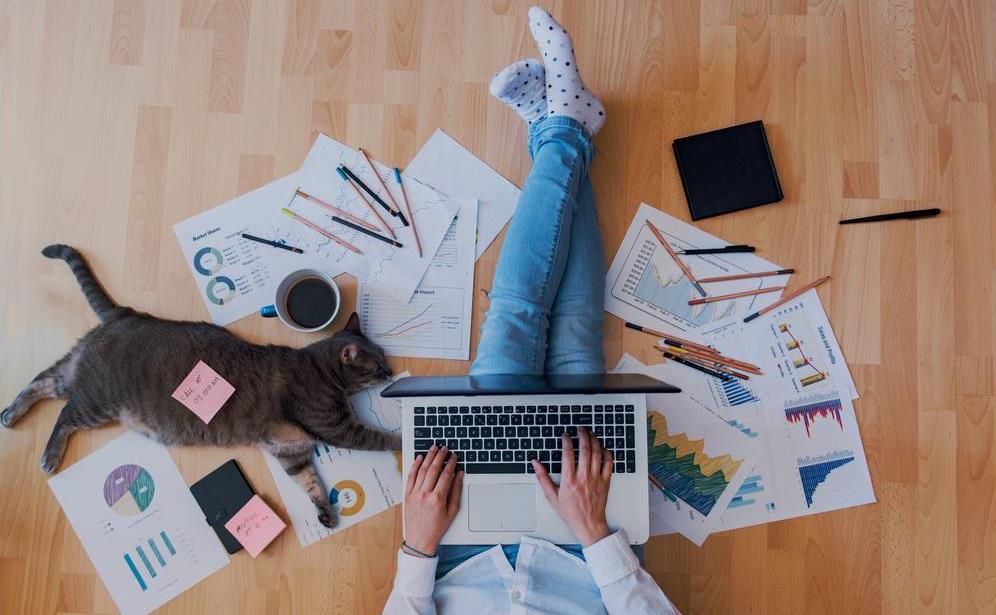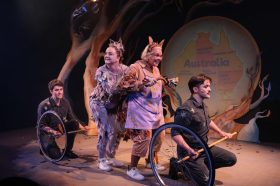Regardless of medium, the act of creation is laborious.
Behind the glamourous opening nights, the bylines, the applause and platitudes are hundreds, if not thousands of hours of grit and determination. Late nights, obligations to loved ones and day jobs are in a constant state of negotiation and flux.
Despite the painstaking hours going into creativity, Creative New Zealand’s 2019 survey A Profile of Creative Professionals found that 55% of creatives supplement their income by working outside of the sector. The following year and into 2021, the location of where these supplementary incomes have been made has shifted into the homes of many creatives around Aotearoa.
While studies are showing that there are many long-overdue benefits to working from home, it can be difficult to juggle creativity, a day job and a personal life in one space. Commitments get blurred or overlooked and creative projects get pushed to the side because (understandably) it all seems too much.
Much like the creative process, maintaining the drive to be creative is a mostly unglamorous affair that takes time and commitment, especially as you fit it around working from home. Below are some ways to help keep your creative levels up from the comfort of your living room.
START THE DAY WITH A CREATIVE ACT
At the risk of sounding like a writer for GOOP, take some time in the morning to pause and connect with your creativity, however that looks for you.
Write a three-word story down. Make your perfect cup of coffee. Wear an amazing outfit. Noodle on a guitar. Who knows what could come out of it?
MAKE CREATIVITY PART OF YOUR DAILY ROUTINE
Your creative endeavour is a job, and it uses skills that would be handsomely recompensed in any other sector. Which is why setting aside time in your daily routine to be creative is important.
When possible, try and fit it around when you feel the most inspired – but also allow for that time to shift, ebb and flow according to your daily needs.
LEARN TO SAY NO
The hardest, most empowering lesson of all.
Creatives have a tendency to view over-commitment as a necessity for their own success or even worse, a badge of honour. We brag about how little we slept or how many hours we pulled to complete a piece.
But it has the very real ability to burn us out.
For many creatives, saying yes is a survival instinct. That’s because in the first decade or so of our careers, saying yes is the only way we could get by; the only way we could gain exposure.
This system is incredibly flawed and leads to people with significant experience still having a ‘yes to everything’ reflex.
Learning how to say no – nicely – will give you the all-important space for stillness, contemplation and an output that is not forced.
EMBRACE THE IMPORTANCE OF BEING IDLE
When I felt myself getting tangled up in my thoughts and going around in unproductive circles, my much-missed Grandmother used to tell me to ‘just take things quietly my dear and you’ll get through’.
Turns out science was on her side and studies show that doing nothing boosts creativity. Scott Barry Kaufman, a Cognitive Scientist and Productivity Expert found that 72% of people get creative ideas in the shower because it allows the mind to wander freely. For him, this ‘highlights the importance of relaxation for creative thinking’.
So next time you are feeling overwhelmed or at an ebb – stop and do nothing.
MOVE
A recent study shows that there are links between physical activity and imagination. It highlighted that people who were active came up with more – and better ideas when tested on their inventiveness than people who were not.
This is the most recent in a long line of studies showing that physical activity impacts how we think, as our brains are nourished with extra blood, oxygen and nutrients. It doesn’t need to be strenuous either. A simple walk can be enough to shift creative blocks and get our thoughts flowing freely with every breath in and out.
Connect
Studies show that 93% of human interaction is nonverbal and 55% of it is visual, meaning that social interaction is fundamental for both the production and consumption of art.
So, it’s fair to say that articulating the human experience through art depends on human interaction.
Working from home can be isolating, so maintaining regular connections is paramount. Dinners over Skype, real-life art evenings, coffee dates – the opportunities are endless to spark your creativity through connections with others.
It is also important to truthfully connect with yourself and your mood every day. We live in strange, anxious times. If you do not feel comfortable talking to your peers about the difficulties of working from home, being a creative in the time of COVID or anything else, there are plenty of support networks available. 1737 (Need to Talk) is a 24/7 free text or call service with trained counsellors or MusicHelps offers a free Wellbeing Service specific to Aotearoa’s arts community.
In Australia, the Arts Wellbeing Helpline is a free, confidential phone counselling service, available 24/7 to anyone anywhere in Australia who works in the performing arts, music, or other creative industries.





